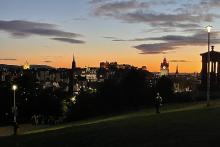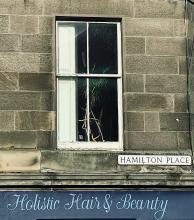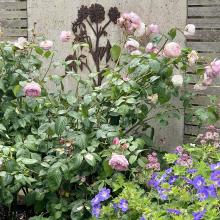
Charlie Ellis heads off in search of real tranquillity
A recent trip to London was enhanced by Siobhan Wall’s Quiet London, which details peaceful nooks in the metropolis. An Edinburgh version of the book seems a faintly absurd idea given that much of the city is sedate by the standards of most major cities.
The ‘villagey’ feel is one aspect that so many appreciate about the Scottish capital is very noticeable when you return from virtually any other substantial city. Edinburgh has often been described as the Athens of the North but the contemporary Greek capital is vastly busier, livelier and more car-dominated than Edinburgh. Cafes in Athens are open till after midnight; they don’t shut up shop at 4-ish in the afternoon!
One aspect that adds to the tranquillity here is the sublime path network. From King George V Park in the heart of Spurtleshire, you can, via the Rodney Street Tunnel, make your way to much of northern Edinburgh unimpeded by traffic, surrounded by dense vegetation. The dispute over the Roseburn Path (whether the tram will be routed along it) demonstrates how much these ‘walking and wheeling’ routes are prized. Many see a wander along them as a great way to ‘clear the head’ – I certainly do.
The level of ‘noise’ we have to endure in our modern lives is substantial, with messages and notifications pulsing through our devices at all times. In any city centre, we are exposed to incessant disturbance. As I crossed the Royal Mile recently, I caught slices of at least four tour guides as they babbled on about ‘Gardyloo!’ and various other predictable aspects of Edinburgh’s history. I felt in dire need of reducing the amount of aural stimulants I was being exposed to sought out quieter places and experiences.
What physical locations can provide such a healing balm?
The main Reading Room of the National Library is a serious and hushed sanctuary but can feel rather austere.
Valued alternatives are places such as the Resources Room at Modern One and the Library of the Portrait Gallery. These are quiet places to absorb the exhibitions you have seen and read materials relevant to them. I only wish that more public institutions had such spaces.
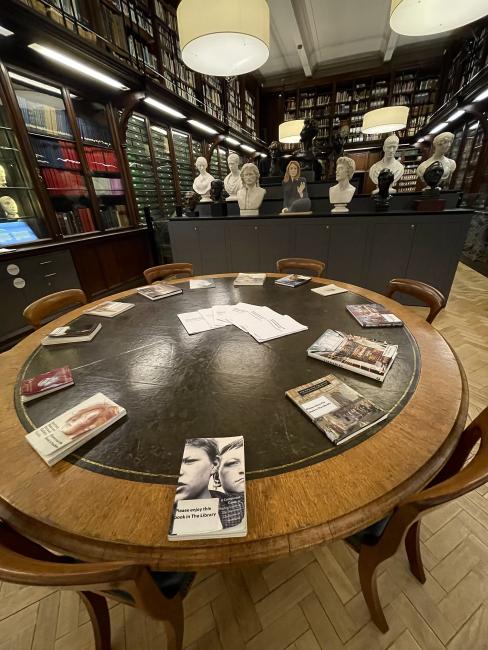
.
In some cases, however, escaping outdoors is the only way to achieve balance. On such occasions, places such as the Botanic Gardens in Edinburgh are a godsend. In search of quiet, I recently came across the tranquil Garden of Tranquillity, located behind the East Gate Lodge. The Lodge was designed by William Playfair and was previously home to the Regius Keeper. It’s been restored and ‘repurposed’ in recent years.
The Garden of Tranquillity here was designed for those suffering from dementia . It has ‘natural boundaries to reduce anxiety, non-slip and non-reflective surfaces to prevent falls and calming artwork to inspire’. It’s also a beautiful little spot with flowing water and ‘vibrant colours, beautiful fragrances and interesting textures to gently stimulate the senses’. All of this can be appreciated by anyone.
The need for secluded spots exists even in a generally quiet environment like a botanic garden. The Garden of Tranquillity lived up to its name, providing shelter on a warm but breezy late June afternoon – respite from the wind and the excessive noise. A place to pause and reflect with a really timeless feel, aided by some of the ‘nostalgic’ plants which are there to help ‘unlock memories’.
By the time I left the garden, I was calmer than when I entered it, more reflective, and in a better position to appreciate its beauty. A wander around the periphery of the Botanics, close to Inverleith Terrace, reveals concealed paths and abandoned steps. It’s easy to feel as if you’ve stepped through some portal as you wander into the Woodland Garden and on to the other delights.
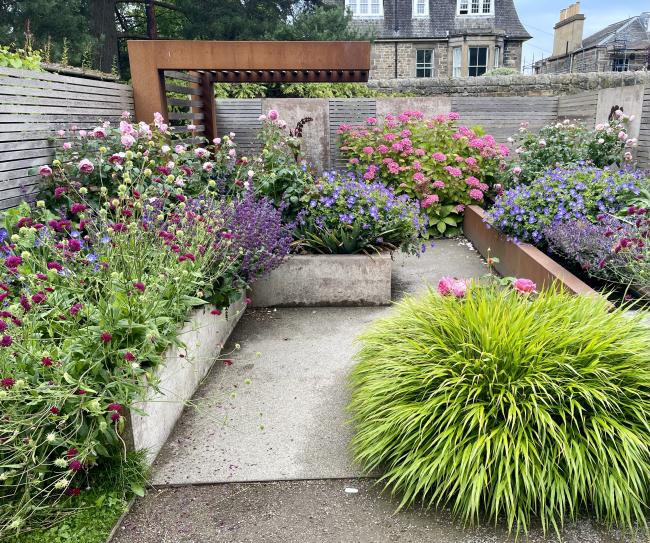
These have included the excellent series of exhibitions at Inverleith House, for example, the recent Silent Archive which made superb use of the RBGE’s resources, bringing dusty documents and diagrams to life. This echoed similarly superb exhibitions here on themes relating to biodiversity at this venue, including Levon Biss’ stunning photographs of seeds and fruits from the RBGE collection. Inverleith House is, of course, ideally suited to such exhibitions, having been home to the Scottish National Gallery of Modern Art from 1960 until 1984. Its light and airy rooms perhaps constitute Edinburgh’s best exhibition space.
The John Hope Centre also features regular exhibitions. One section includes videos on the Gardens and developments within them. The videos on the restoration of the Palm House are cathartic. Watching the craftsmanship involved in the restoration is calming and uplifting … the sense that what is damaged and deteriorating can be brought back to health and survive far into the future. Those in charge of the restoration want the 200-year-old building to last at least another 200 years. Truly restorative.
My experience was much enhanced by the serenity I felt, engendered by those quiet moments in the Garden of Tranquillity. I felt a slowing of the pace and a heightening of my senses. However, on my next visit to the Botanics, I found that others were sitting there. The Garden of Tranquillity had become too busy.
My search for real quietness continues.
Postscript
A couple of weeks later I headed back to take a few snaps. Again, it was hard to find tranquillity. The Botanics were, on a muggy afternoon, well populated. From the West Gate I had to slalom through large groups of teenage students, taking care not to get between those taking photos, before I finally arrived at the Garden of Tranquillity.
It took about 20 minutes until the place was clear and I could take some photos. A few visitors lingered around, slightly bemused by the garden. On the bench, sat an elderly man seemingly deep in thought, with butterflies and bees busily encircling him. So, I left him to it; it would have been rude – and hypocritical – to breach his peace.
Strangely, the quietest places in the Garden are those around the glasshouses, which typically would be thronged. Instead these areas are currently being restored and remodelled; the grassy parts around them have been left to go wild. It all has a slightly post-apocalyptic feel. Maybe that's the only real route to total tranquillity.
